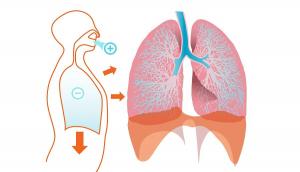Types of medications (based on their use and side effects)
Medicine is one of the sciences that has had the greatest impact on humanity. Thanks to it, the average life expectancy of men and women has been lengthened. The ability to study and understand many of the disorders, infections and diseases that have affected us throughout history has allowed us to seek ways to achieve better health. Among them is the use of medications.
Drugs are a chemical compound that is made up of one or more active principles (which carry out the action within the body) and excipients (elements that are there to facilitate the administration of the principle active). Today, there is an extensive catalog of different types of drugs, a whole industry is behind them. And its usefulness has become very common, which has led to campaigns for a rational use of drugs.
- You may be interested: "15 recommended medical books for the curious”
Types of medications according to their use
There are various criteria to classify drugs, such as the ATC code (Anatomical, Therapeutic, Chemical) used by the WHO or others. simple, such as those that are guided by their pharmaceutical form (solid, liquid ...), according to the route of administration (oral, rectal, ...) or according to their indications. The latter may be the easiest to start differentiating types of drugs, because it focuses on their use without going into much more detail.
Even so, the list of drugs is very extensive, so the best option is to focus on the most commonly used drugs to simplify the classification.
1. Analgesics
In this group of types of drugs are all drugs that are intended to relieve physical pain, be it head, joint or whatever. Its catalog can be divided into two large families: opiates and non-opiates.
The former are more powerful in action, are not allowed in self-medication and can generate dependence (such as morphine); while the latter are the opposite, and include both Non-Steroidal Anti-Inflammatory Drugs (NSAIDs), such as ibuprofen and aspirin or paracetamol. Among the general side effects of NSAIDs are that they promote the development of ulcers, can cause kidney complications and increase blood pressure.
2. Antacids and antiulcers
Two different groups of drug types, but sharing similar functions: decreased gastric secretions. If the acidity decreases, the appearance of ulcers is prevented. A known example is Omeprazole.
In these drugs, the most important side effects are alterations in intestinal transit (diarrhea or constipation).
3. Anti-allergy
Drugs that are intended to combat the negative effects of allergic reactions are grouped into this category. or hypersensitivity.
The most popular are drugs from the antihistamine family, whose mechanism of action influences histamine, which plays an important role in allergies. Its adverse reactions are minimal, but it can cause diarrhea, drowsiness, fatigue or headaches.
- Related article: Histamine: functions and associated disorders
4. Antidiarrheals and laxatives
Antidiarrheals are types of medications that are intended to relieve and stop the effects of diarrhea.. The most widely used currently are drugs that inhibit the motility of the intestine, which favors retention to achieve greater consistency and volume in the stool. The adverse reactions of these drugs are minimal, although some such as abdominal pain or constipation have been recorded.
Instead, laxatives are prescribed for the opposite case, in other words, to solve constipation problems due to increased bowel movement or lubrication. Its use should be moderate and as a support, because a prolonged treatment makes the intestine not work properly, reducing its ability to absorb nutrients.
5. Anti-infectives
These types of drugs are prescribed to deal with infections. Depending on the infectious agent, they are classified into antibiotics (against bacteria), antifungals (against fungi), antivirals (against viruses) and antiparasitics (against parasites).
Self-medication is not advised, so a prescription is always needed. The biggest side effect, especially in the case of antibiotics, is that they exert an artificial selection on infectious agents.
For example, in the case of bacteria, within the same type of bacteria, there may be strains that resist the effect of a specific antibiotic. By using this antibiotic in an abusive way, all bacteria die except those that have resistance, so in the end it will stop having an effect.
6. Anti-inflammatories
As the name itself indicates, are drugs that are intended to reduce the effects of inflammation. The most prescribed are those classified as NSAIDs, which in addition to reducing inflammation, have analgesic effects.
7. Antipyretics
Antipyretic drugs are a class of drugs that have the ability to reduce fever. Among the best known are aspirin, ibuprofen and paracetamol, which also have other functions.
In general, as NSAIDs that are the first two, they can cause problems in the digestive system, unlike paracetamol.
8. Antitussives and mucolytics
They are drugs that are prescribed to try to reduce non-productive cough, that is, it does not release mucus. Extreme care must be taken with their dosage, as some of them, such as codeine, are addictive.
As for mucolytics, they are drugs that are recommended when mucus makes it difficult to breathe correctly. Its side effects are minor, such as headaches or allergic reactions.

